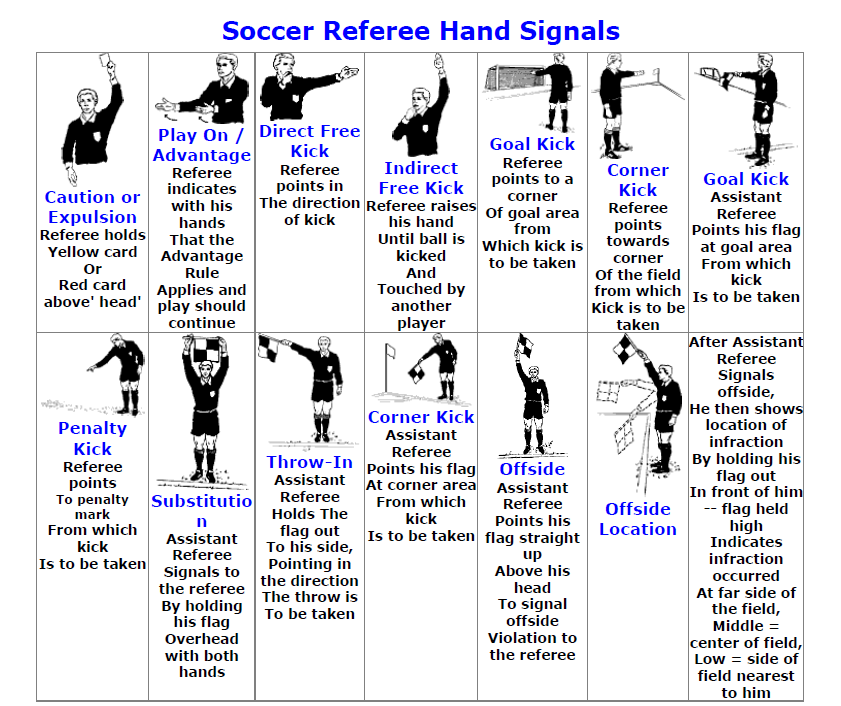
Understanding Soccer Referee Signals: A Visual Guide
Understanding Soccer Referee Signals: A Visual Guide
If you’ve ever watched a soccer match, you’ve likely seen the referee’s signals that accompany the game. But do you know what those signals mean? This guide will give you a visual tour of all the referee signals used in soccer.
When the referee signals for a foul, he or she will raise the arm holding the whistle and point towards the direction of the foul. This does not necessarily indicate which team committed the foul, but rather the area in which the foul occurred. The referee will then blow the whistle and point the other arm to indicate the direction of the free kick.
Another signal used by the referee is the “advantage signal”. This signal happens when the referee decides to play on, instead of stopping the game for a foul. The referee will raise both arms above the head and make the shape of an “X” or an “O” to indicate the advantage.
The referee can also indicate a substitution in a few different ways. If the substitution is due to an injury, the referee will signal for the substitution by raising their arm and pointing in the direction of the player that needs to be substituted. If the substitution is not due to an injury, the referee will signal the substitution by raising their arms and pointing in the direction of the bench.
The referee also has signals for when the ball goes out of play. If the ball goes out of bounds, the referee will raise both arms and point in the direction of the team that gets the throw or kick-in. If a team takes a corner kick, the referee will hold both arms up and point in the direction of the team taking the corner kick.
FAQs
What is the signal for a foul?
The signal for a foul is when the referee raises the arm holding the whistle and points towards the direction of the foul, then blows the whistle and points the other arm to indicate the direction of the free kick.
What is the advantage signal?
The advantage signal is when the referee decides to play on, instead of stopping the game for a foul. The referee will raise both arms and make the shape of an “X” or an “O” to indicate the advantage.
How does the referee indicate a substitution?
If the substitution is due to an injury, the referee will signal for the substitution by raising their arm and pointing in the direction of the player that needs to be substituted. If the substitution is not due to an injury, the referee will signal the substitution by raising their arms and pointing in the direction of the bench.
How does the referee signal when the ball is out of play?
If the ball goes out of bounds, the referee will raise both arms and point in the direction of the team that gets the throw or kick-in. If a team takes a corner kick, the referee will hold both arms up and point in the direction of the team taking the corner kick.





